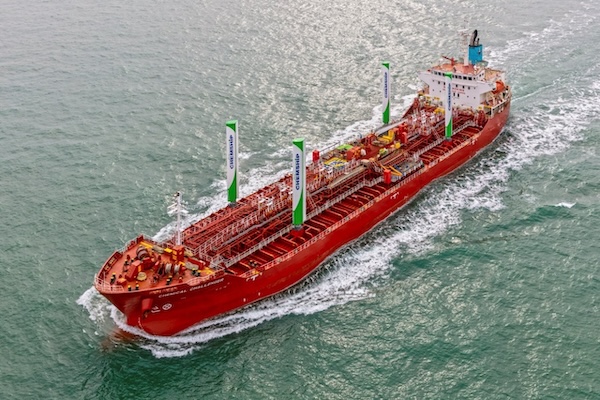Econowind Achieves Milestone, 100 VentoFoil units, in Wind-Assisted Propulsion

Econowind has reached a significant milestone by selling over 100 VentoFoil units, highlighting the shipping industry’s transition to Wind-Assisted Ship Propulsion. This surge in adoption reflects shipowners’ commitment to reducing fuel consumption and CO₂ emissions while adhering to stricter global regulations. Since the installation of the first two units on MV Ankie in 2018, Econowind has expanded its operations, with 32 units currently in use and 33 more in production or ready for installation. An additional 37 units are scheduled for delivery in 2025, demonstrating the technology’s versatility across various vessel types, including bulk carriers, tankers, RoRo, and container ships.
Production Expansion in Zeewolde
To meet the rising demand for VentoFoil technology, Econowind is increasing production capacity at its facility in Zeewolde. The expansion includes enhanced space and optimized manufacturing processes, allowing for higher output and shorter lead times. This strategic move positions Econowind to better serve shipowners seeking low-carbon shipping solutions. The VentoFoil range offers flexible options, including 10m, 16m, 24m, and 30m versions, catering to different vessel sizes and operational requirements. Additionally, Econowind provides containerized and Flatrack VentoFoil units, which can be easily transferred between vessels. This adaptability makes VentoFoil a practical solution for shipowners aiming to improve efficiency and reduce carbon emissions while maintaining operational flexibility.
As the shipping industry faces tightening CO₂ reduction targets under the upcoming FuelEU Maritime regulations, the VentoFoil technology offers a competitive advantage. Shipowners utilizing VentoFoil can benefit from the Wind Reward Factor (WRF), which lowers reported emissions and simplifies compliance with regulations such as FuelEU Maritime, CII, and ETS. By integrating VentoFoils, shipowners can reduce fuel costs, decrease carbon allowance expenses, and enhance their CII ratings, positioning themselves ahead of regulatory changes while lowering overall operational costs.
